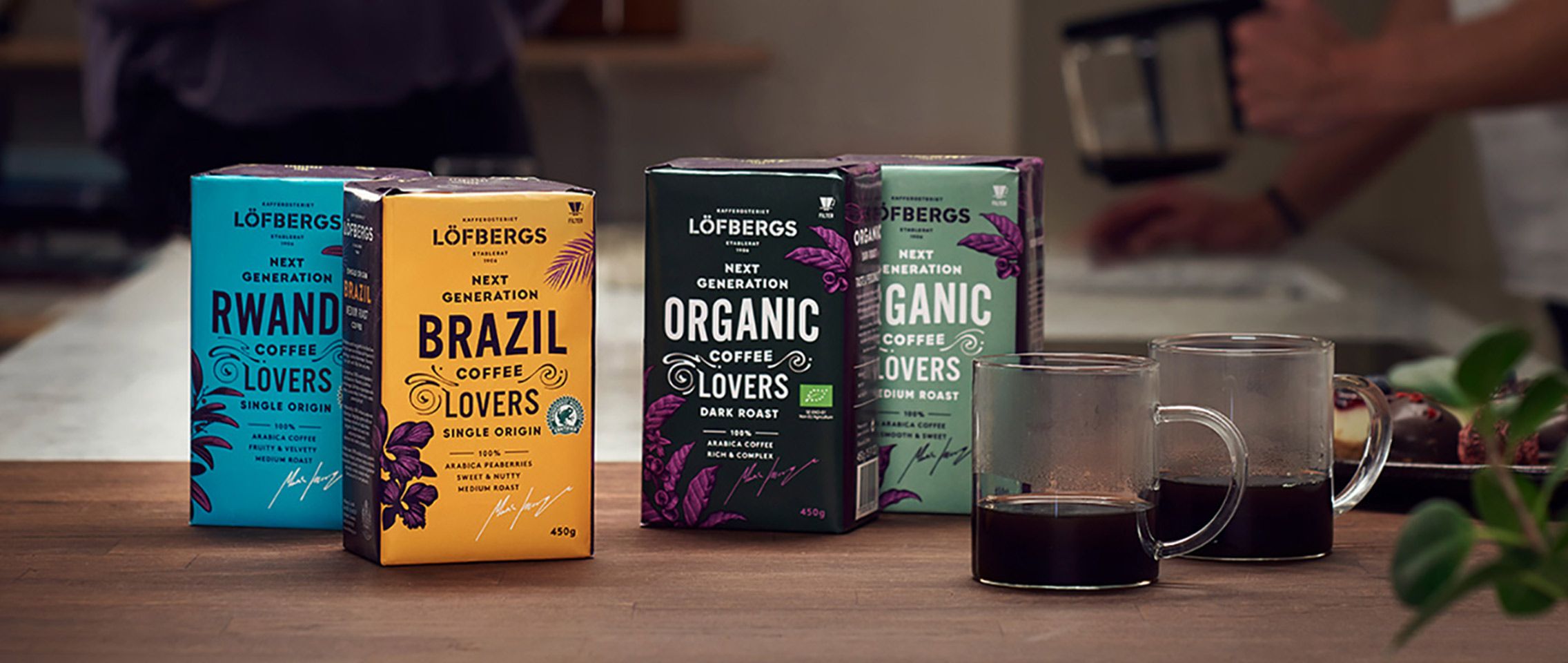Striking the Balance: Löfbergs’ Supply Chain Dilemma
Sweden is a nation of coffee-lovers. Coffee drinking is part of the culture, and the average Swede gets through four cups per day. Löfbergs, with their characteristic purple and yellow branding, is synonymous with coffee tradition in Sweden. The family-owned company has been operating from a base in Karlstad since the early 1900s.
A passion for good coffee, as well as a commitment to sustainability and fairness has served the Löfberg family well. Today the company is one of the largest coffee producers in the Nordics, and among the world’s largest importers of organic and fair-trade coffee.
The majority of Löfbergs coffee is still roasted and packaged in Karlstad. From here, it is shipped across Scandinavia, to the Baltics, the UK and more recently, Canada.
Löfbergs serves a broad spectrum of customers – from major retailers and national restaurant chains, to small, independent cafés. Many expect next-day delivery. The company buys directly from growers’ cooperatives and coffee retailers in the Equatorial belt and ships the beans back to Sweden – a journey that typically takes eight weeks. Löfbergs needs to be able to meet demand, but at the same time, doesn’t want to over-purchase. If they don’t get it right, their purchasers end up having to buy from the spot market, which is a lot more expensive.
Löfbergs, facing the complex challenge of meeting next-day customer service expectations while dealing with long procurement lead times and a delicate roasting production process, recognized the crucial need for a clear and accurate demand plan. This plan was essential to maintain a balance between stock levels and service.
Originally, the company relied on manual spreadsheets for forecasting, looking back three months, projecting this average into the future, and adjusting based on knowledge and intuition. This approach, however, limited their ability to plan over a longer time horizon. The delay in obtaining accurate demand information presented significant challenges. The company aimed to introduce more standardization in forecasting and to access more reliable information earlier in the planning process.
Revamping Production Planning: Löfbergs’ Transformation Journey
Löfbergs began looking at better and more efficient ways to respond to the ever-changing demand for their coffee. In their search for a forecasting tool, the team recognized that the production side of the business also lacked adequate planning.
The planning functionality of the company’s Materials Requirement Planning (MRP) system initially didn’t consider production capacity, which was a significant limitation. The available plans would only indicate the quantities to buy and produce, but not address critical details of how, where, and when. The introduction of the RELEX supply chain optimizing tool marked a substantial improvement. It provided the needed functionality, allowing the company to quickly generate optimized production plans. These plans are now more comprehensive, taking into account the most current forecasts and order situations, while also respecting the plant’s capacity and existing load.
Achieving Precision: Löfbergs’ Enhanced Forecasting Process
The key component of Löfbergs’ solution lies in the implementation of the RELEX demand planning tool. With this tool, the company has established a standardized forecasting process across their operations. The Demand Forecaster has enabled Löfbergs to create a statistical forecast that significantly surpasses the quality of their previous methods. This improvement has led to greater confidence in the baseline forecast, reducing the reliance on manual adjustments of numbers.
Forecasting now operates at a three-to-four-month time horizon and Löfbergs uses the forecast daily to guide production planning, procurement and delivery. The company is able to operate with much lower stock levels across the supply chain because they have more confidence in the forecasts.
The company emphasizes that using the same plan and tool for adjustments has greatly improved their ability to communicate changes across the business. The team now has a deeper awareness and understanding of the forecasting process and the importance of accuracy in forecasts. With more reliable demand plans, they are better positioned to serve customers with lower stock levels, plan sourcing more effectively for better prices, and avoid costly spot market purchases.
The decision to partner with RELEX was influenced by their proven expertise in the field. The company found that RELEX offered more than just software; they provided valuable know-how and a deep understanding of the complexities of supply chain planning. Additionally, the expertise of RELEX in integrating with ERP systems, such as the Movex solution used by the company, played a significant role in facilitating the implementation process and enhancing the effectiveness of the solution overall.

